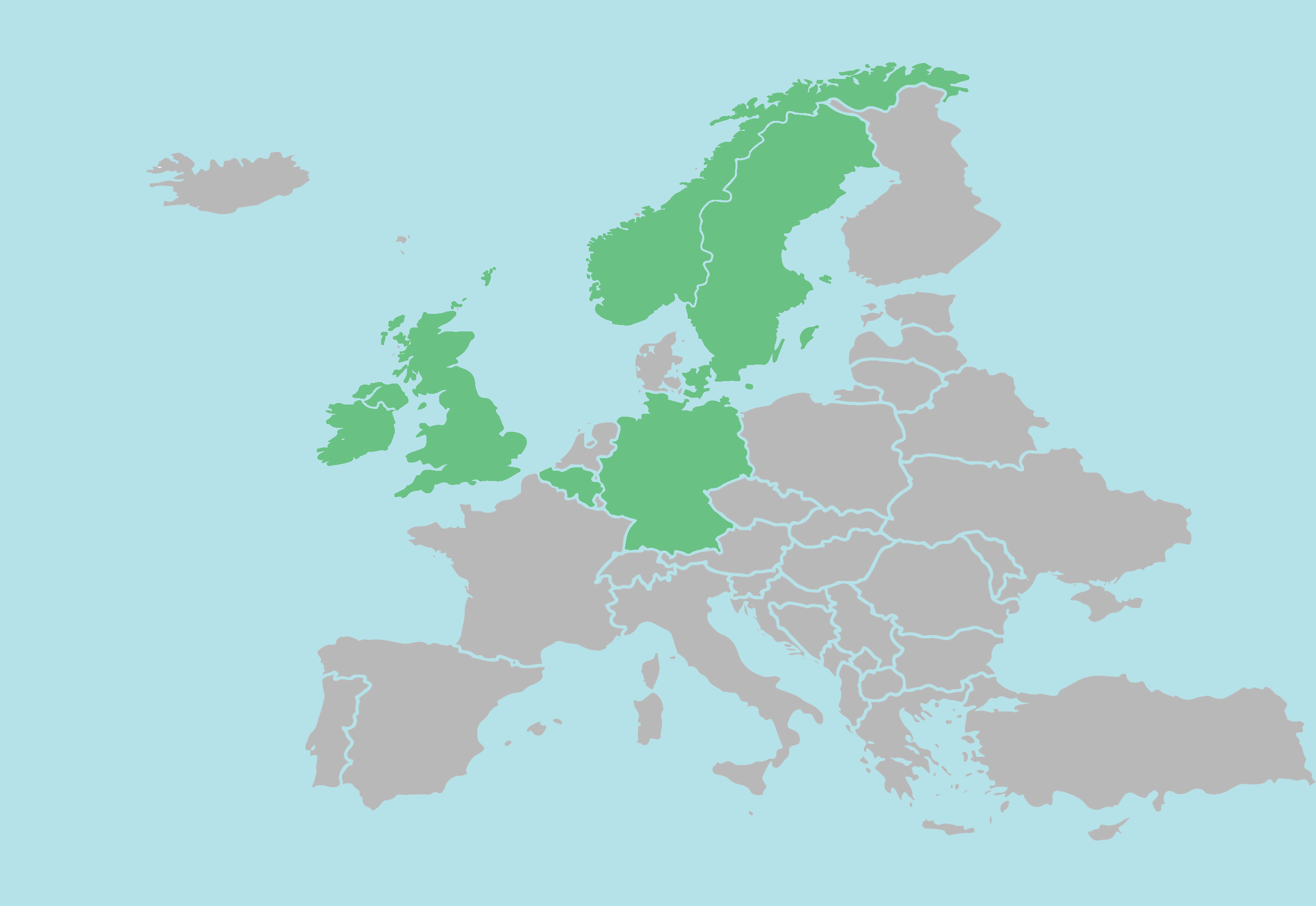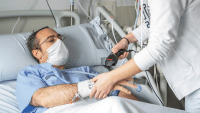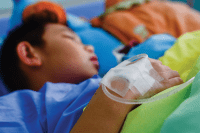Nurses reach across international boundaries to achieve Magnet® recognition.
- Magnet4Europe represents the largest international implementation science initiative designed to leverage the American Nurses Credentialing Center Magnet® model for improving work environments and clinician well-being in Europe.
- Partnerships have been created between 68 Magnet-recognized U.S. hospitals and 65 general acute care hospitals in Belgium, England, Germany, Ireland, Norway, and Sweden.
- This article highlights the collaboration between the Hospital of the University of Pennsylvania in Philadelphia and Universitätsklinikum Münster in Germany.
Magnet4Europe represents the largest international implementation science initiative designed to leverage the American Nurses Credentialing Center (ANCC) Magnet® model for improving work environments and clinician well-being in Europe (magnet4europe.eu). Partnerships (or twinning) of 68 Magnet-recognized organizations in the United States with 65 general acute care hospitals in Belgium, England, Germany, Ireland, Norway, and Sweden have proven critical to this intervention. (For a complete participant list, visit nursing.upenn.edu/chopr/magnet4europe.)
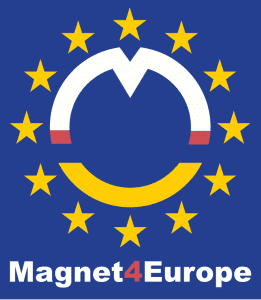

The participating U.S. organizations include all six of the Penn Medicine Hospitals—the Hospital of the University of Pennsylvania (HUP), Penn Presbyterian Medical Center, Pennsylvania Hospital, Chester County Hospital, Lancaster General Hospital, and Penn Medicine Princeton Health. They’re twinned with aspiring Magnet hospitals in Belgium, Germany, and Ireland.
This article will focus on the partnership between HUP and Universitätsklinikum Münster (UKM). These large, urban academic medical centers with similar numbers of beds and patient care specialties (one in Philadelphia—the City of Brotherly Love—and the other in Münster North Rhine-Westphalia, Germany—the City of Peace) have operationalized the Magnet4Europe principles.
HUP received its first Magnet designation in 2007, and for the fourth time in 2020. UKM is on its initial journey to Magnet recognition and has been working with HUP since mid-2020 to employ Magnet principles. Members of both teams meet weekly and share best practices.
Understanding the need
After the teams met and became familiar with one another, they conducted a gap analysis to establish UKM’s readiness to apply for Magnet designation. Using a 0–3 scale, a modification of the ANCC’s Gap Analysis Tool©, the teams scored UKM’s level of development in each of the Magnet program standards (Sources of Evidence [SOEs]).
As a U.S.-based program, the Magnet Application Manual® uses terminology most understandable by U.S. organizations. The HUP/UKM team spent time establishing the similar intent behind the wording of existing UKM structures that doesn’t exactly match Magnet wording. For example, “shared governance,” a common U.S. term, is rarely used in Germany. Despite the language and interpretation challenges, many structures and processes in place at UKM to support clinical nurses’ shared decision-making also serve to meet certain SOE requirements.
Addressing identified gaps
After completing the gap analysis, HUP and UKM worked together to develop a plan to prioritize closing identified gaps, benchmarking, and developing a professional practice model (PPM), nursing strategic plan, shared governance structure, and nurse reward and recognition.
Benchmarking
The 2023 Magnet Application Manual requires benchmarking nursing satisfaction (EP3EO), nurse sensitive indicators (EP19EO, EP20EO), and patient experience (EP21EO and EP22EO) SOEs. (EP indicates that the example is from the exemplary practice section, and the numbers indicate the example order. EO stands for empirical outcomes, which require data in the form of a graph.) These large data sets must be benchmarked using an approved vendor’s national database, which can prove difficult to attain.
Although the 2023 Magnet Application Manual can be used in hospitals around the world, the HUP/UKM partnership revealed that the language and requirements most closely align with U.S. hospital structures; existing nuances can be clarified using the International Interpretation document, which underscores the benefit of the Magnet4Europe partnerships. For example, the Magnet Application Manual’s reference to vendors’ national databases may not be applicable to many European countries. Most U.S. organizations use third-party vendors to assess and benchmark nursing satisfaction, nurse-sensitive indicators, and patient experience. Most notably, hospitals are required to collect large data sets via an independent vendor for benchmarking and ultimately healthcare reimbursement through the Centers for Medicare & Medicaid Services.
However, such practices aren’t considered standard in many European countries, including Germany. These hospitals aren’t funded on the basis of their clinical outcomes, so the payment system doesn’t require generating patient satisfaction or other patient outcomes. European hospitals collect and benchmark data, but their methods may not fully meet Magnet requirements without modification.
The HUP/UKM team considered whether UKM should submit their data to an American vendor and compare themselves to primarily U.S. hospitals or whether they should partner with other German hospitals or other European hospitals within the Magnet4Europe consortium to develop new vendors and benchmarks that more closely align with their healthcare infrastructures. The team continues to review these opportunities to determine which option best positions UKM for success.
Professional practice model
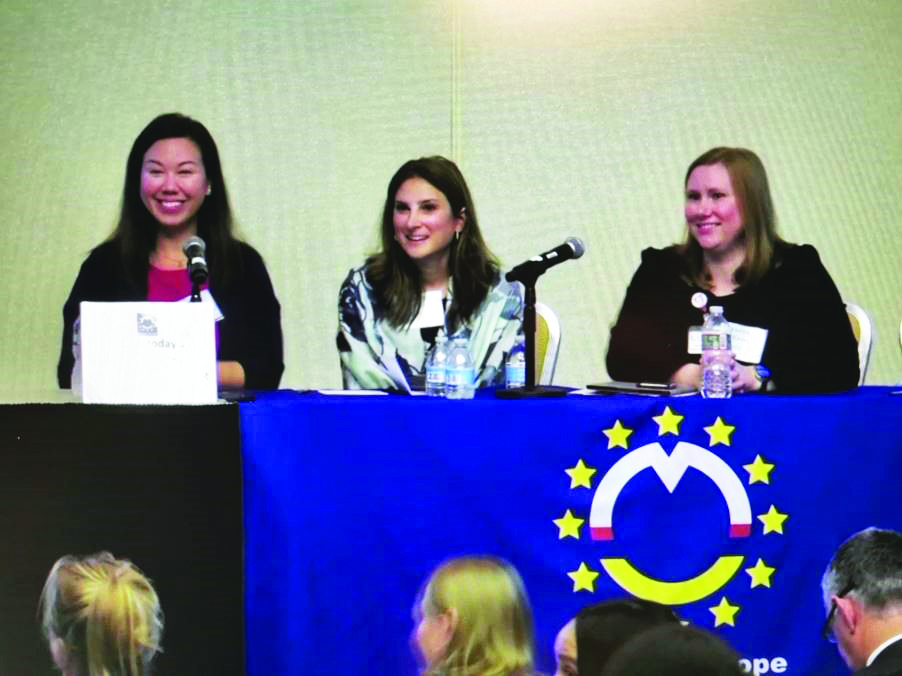

To address this need for a PPM, HUP shared the Penn Medicine model (Care, Lead, Innovate) and described in detail their process for creating it, which included asking nurses at all levels “What does your (nursing) practice mean to you?”
The Penn Medicine PPM represents the unique and diverse ways that all nurses care, lead, and innovate. This includes providing high-quality care at the bedside, advancing knowledge and skill in the classrooms, translating evidence into practice within organizations, generating science and new knowledge, connecting and building partnerships within communities, and caring for themselves and each other. In 2022, Penn Medicine Magnet leaders presented this work at the Magnet4Europe consortium meeting in Philadelphia.
Using the knowledge gleaned from HUP about the Magnet PPM requirements, UKM began creating its own model. Because Münster is known for its citizens’ use of bicycles, UKM nurses decided to use a bicycle image with tire spokes representing their PPM tenets. To ensure nurses at all levels had the opportunity to influence PPM development, the UKM Magnet team created large bicycle poster templates for nurses to add to as they reflected on what their nursing practice means to them. UKM is in the final stages of PPM development and excited to present the work in early 2023.
Nursing strategic plan
To help UKM develop a nursing strategic plan, HUP nurse scientists and Magnet team members guided the UKM team through the HUP process, which began in 2014 with a qualitative descriptive study to identify nurses’ perspectives on priority focus areas within the department of nursing. The study consisted of 42 focus groups, which included 196 nurses from all areas of practice. Three main themes emerged as key priorities for HUP nursing: Investing in Nursing, Patient and Family Experience, and Teamwork. These themes became the main imperatives of HUP’s 2015-2018 Nursing Strategic Plan.
Throughout this process, HUP nursing leadership implemented strategies in alignment with the imperatives, which resulted in an average 6% improvement in National Database of Nursing Quality Indicators (NDNQI) RN survey results. In 2017, HUP’s nurse leaders inventoried unit and nursing department interventions that directly aligned with the strategic plan and, in early 2018, assessed concurrent trends with the 2018 NDNQI RN survey results. Nursing leaders then partnered with clinical nurse shared governance chairs to ask nurses to provide input on the existing strategic plan and any initiatives that they felt should be “started,” “stopped,” or “continued.” Results from these feedback sessions resulted in a revised strategic plan.
Because of the successes HUP achieved in developing and revising their strategic plan, and because HUP is looking to again revise the plan using the same qualitative descriptive method, UKM agreed to partner with HUP and replicate the study in their organization. Upon completion, the two study teams will compare and contrast findings to reinforce sharing nursing priorities and best practices across countries.
Shared governance
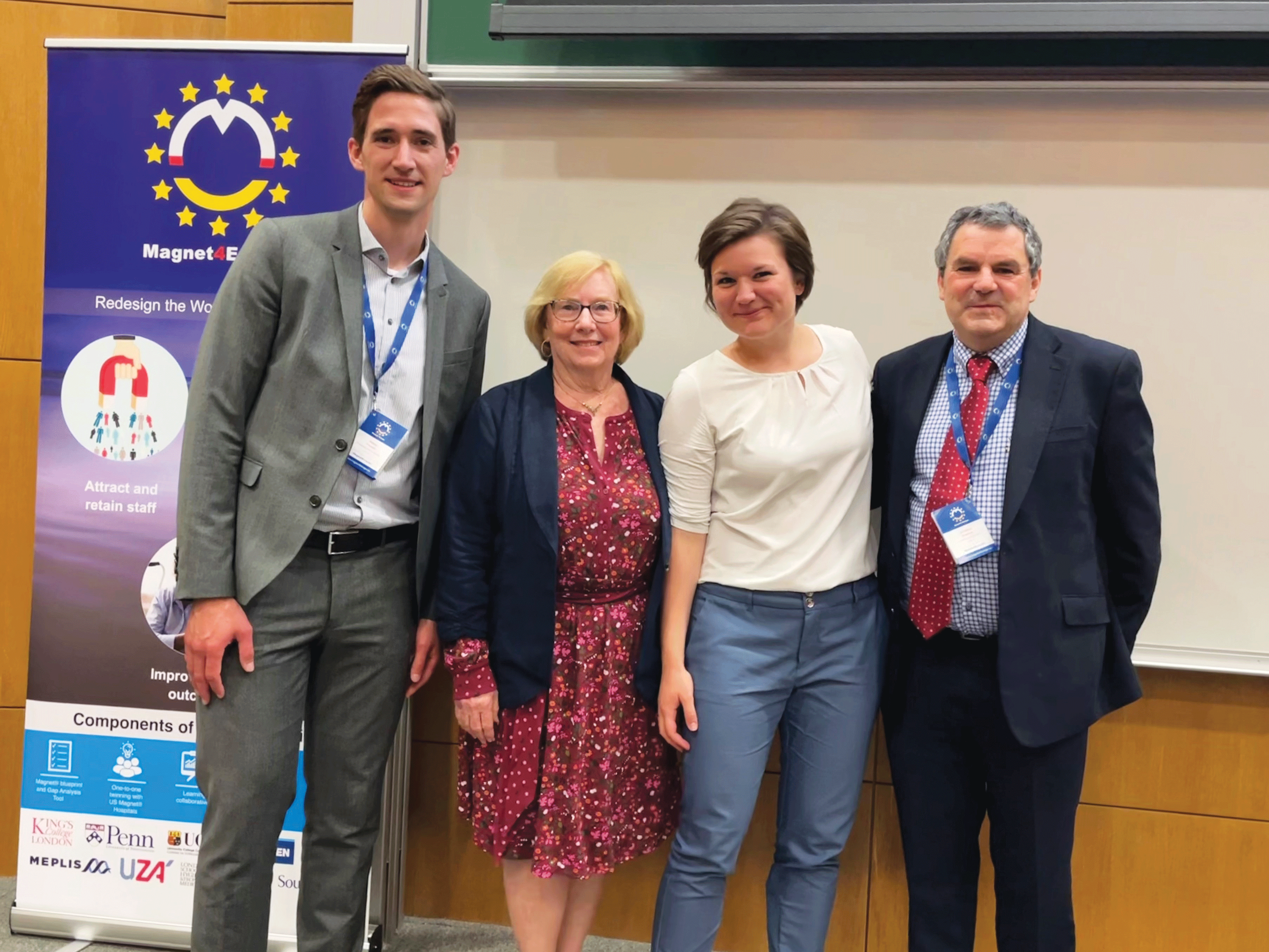

The HUP shared governance structure, in place for nearly 20 years, has evolved to meet the current needs of nurses while continuing to align with the Magnet framework. To help UKM ensure its existing shared decision-making structures and processes meet Magnet standards, HUP shared how it operationalized its structure and invited UKM to virtually observe its shared governance meetings. After further discussion, the HUP/UKM team discussed starting at the UKM unit level to capitalize on unit strengths for best results.
Beginning with a urology clinic, the team conducted a descriptive qualitative study using semi-structured interviews with six informants (including a clinical nurse, nurse leader, physician, medical assistant, and case manager) to understand the work environment. They used fundamental elements of shared governance to guide interviews. After completing the interviews, the team identified and validated themes using focus groups. Suggestions for improvement included changes in resource allocation method, coordination of processes across disciplines, and visible transformational leadership. UKM also found that including disciplines beyond nursing aided buy-in and collaboration.
Since the inception of the interprofessional urology model, the culture on the unit has improved because all participants can provide input into their work environment. Two members of the UKM team presented this work at the 2022 Magnet4Europe Learning Collaborative in Cork, Ireland. Each year, clinical nurses involved with shared governance at HUP participate in a Best Practice Forum, where clinical nurses present their shared governance council’s goals, implementation plan, and outcomes. In December 2022, UKM clinical nurses joined HUP clinical nurses to present each council’s work.
Nurse reward and recognition
In discussing the type and frequency of nurse reward and recognition at UKM, HUP shared that they leverage their Professional Development Core Council as the decision-making group for nursing recognition. For example, the council supports recognizing nurses for their contributions via the international DAISY Award program (daisyfoundation.org), which honors nurses for the care they provide. Each DAISY partner organization has the opportunity to adapt the program to their needs.
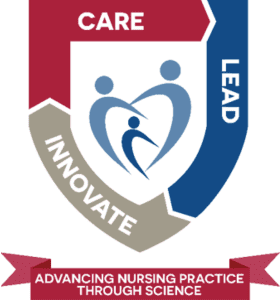

The UKM Magnet team opted to initiate the DAISY program at their organization. HUP shared their best practices for identifying and recognizing recipients. In the near future, UKM will leverage shared decision-making councils composed of clinical nurses to recognize DAISY award recipients.
A catalyst for advancement
The Magnet4Europe project has enabled two hospitals in different countries to exchange best nursing practices with the aim of improving clinician well-being. The twinning partnership has been mutually beneficial. Both hospitals have revised or implemented existing structures and processes to better align with Magnet standards. The Magnet model, which has been transformational in the United States, has the potential to be a force for international nursing advancement. However, growth of Magnet hospitals outside of the United States has been slow. Magnet4Europe seeks to test the Magnet model in several European countries as an intervention to improve hospital work environments and clinician well-being. We’re optimistic that twinning and co-design of the Magnet model will act as a catalyst for advancing the model for the benefit of nurses around the world and the patients they serve.
Jessie Reich is the director of patient experience and Magnet programs at HUP. Niklas Fruecht is a member of nursing administration at the University Hospital Münster. Verena Sumner is Magnet director at the University Hospital Münster. Thomas van den Hooven is CNO at the University Hospital Münster in Münster, Germany. Colleen Mattioni is the chief nursing executive (CNO) at Penn Medicine–Hospital of the University of Pennsylvania (HUP). Linda H. Aiken is a professor of nursing and sociology and founding director of the Center for Health Outcomes and Policy Research and the University of Pennsylvania in Philadelphia, and co-director of Magnet4Europe.
Magnet4Europe: Improving Mental Health and Wellbeing of Health Professionals and Patients. Funded by European Commission: Horizon 2020, Grant 848031 (Walter Sermeus and Linda Aiken, Directors).
American Nurse Journal. 2023; 18(1). Doi: 10.51256/ANJ012346
Key words: Magnet, Magnet4Europe, international collaboration
References
Kutney-Lee A, Germack H, Hatfield L, et al. Nurse engagement in shared governance and patient and nurse outcomes. J Nurs Adm. 2016;46(11):605-12. doi:10.1097/NNA.00000000000000412
Rao AD, Trotta RL, Rabelais E, Reich J, Mattioni C, Cunningham RS. Nursing strategic imperatives: Engaging nurses in strategy development and execution to drive value. J Nurs Adm. 2022;52(11):577-83. doi:10.1097/NNA.0000000000001213
Sermeus W, Aiken LH, Ball J, et al. A workplace organisational intervention to improve hospital nurses’ and physicians’ mental health: Study protocol for the Magnet4Europe wait list cluster randomised trial. BMJ Open. 2022;12(7):e059159. doi:10.1136/bmjopen-2021-059159
van den Hooven T, Fruect N, Sumner V, Mattioni C, Reich J, Ward A. Collaborative leadership hand-in-hand: Enhancing interprofessional team engagement with shared governance structure. Presentation at Magnet4Europe Consortium Meeting. Cork, Ireland; 2022.

